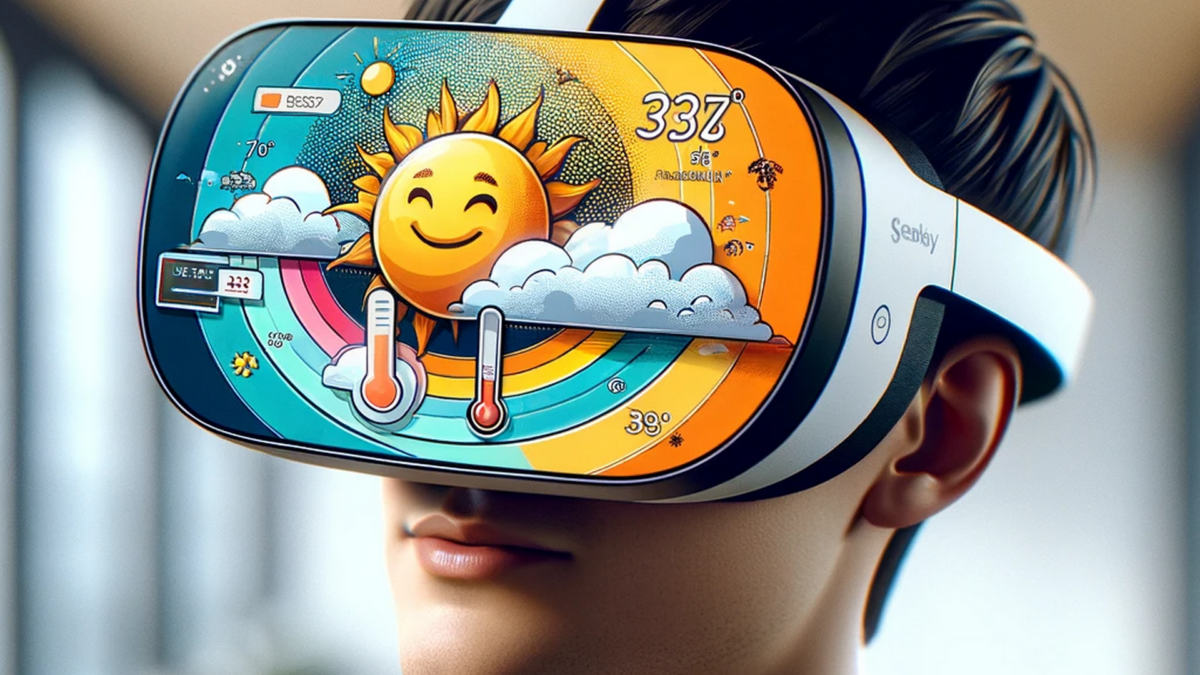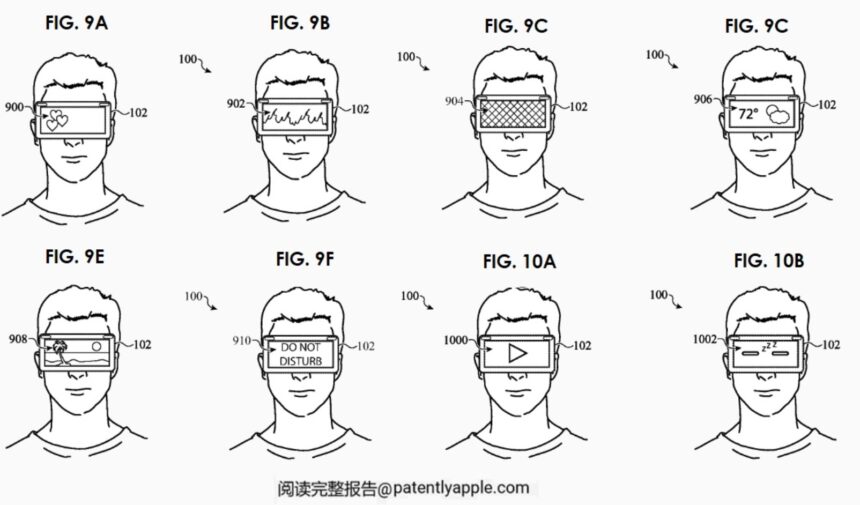Vision Pro Headset's External Screen: From Weather Updates to Zoom Icons

Discover how Apple Vision Pro's external screen could display what the wearer is doing in quite funny ways.
A recent patent awarded to Apple discloses concepts for utilizing the external display of the Vision Pro headset to exhibit what the user is viewing within the device. The patent, which credits ex-Apple design head Jony Ive as one of its inventors, suggests various methods for using an external screen on a generic head-mounted display to signal what the user is watching to those nearby.
Although the patent doesn't explicitly mention the Vision Pro and its “EyeSight” display function, several ideas evidently influenced the features in the final headset. Apple has already talked about how the Vision Pro's outer screen can permit others to see the eyes of the person wearing the headset or demonstrate a vibrant pattern indicating the user is wholly immersed in VR.
The patent further proposes other uses for the external display, such as showcasing weather data, a “Do not disturb” notice, or even substituting the user's eyes with Zoom or Teams icons.
Please note that such patents may not be reflected in the final product.

A patent reveals what the outer display of the Apple Vision Pro could show. | Bild: patentlyapple
Creating Artificial Transparency for Enhanced User Interaction and Realistic Eye Contact
The most distinctive feature of the Apple Vision Pro is EyeSight, which creates artificial transparency on the surface of the headset, allowing for eye contact. To outsiders, the front of the Vision Pro might appear to be made of transparent glass. In reality, the wearer's eyes, like with any other VR headset, are hidden behind a thick layer of technology containing displays, lenses, sensors, and chips.
The secret behind EyeSight is a front display that renders the eyes of the headset wearer in real-time. The EyeSight display is curved and uses the lenticular principle, meaning it displays a slightly shifted image of the eyes depending on the viewing angle. This makes the eyes appear more natural, particularly when viewed from the side. The data for these views come from two sources: the recordings of the eye-tracking cameras inside the headset, and the persona, or digital avatar, generated in advance using a 3D face scan of the wearer.
Note: Links to online stores in articles can be so-called affiliate links. If you buy through this link, MIXED receives a commission from the provider. For you the price does not change.